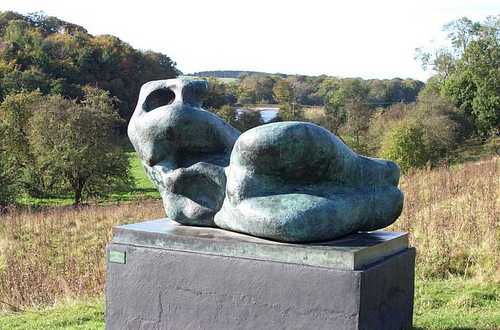Henry Moore
dal 7/4/2006 al 3/2/2007
Segnalato da
7/4/2006
Henry Moore
Tate Liverpool, Liverpool
Building on Tate Liverpool's established reputation for presenting 3-dimensional works, the display focuses on Moore's most abstract sculptures and drawings and their relationship to natural form. He had an acute eye for the sculptural qualities of objects and kept a large number in his studio as inspiration for his work.

Natural Form
Twenty years after the death of Henry Moore, one of Britain's most celebrated artists, Tate Liverpool will present an exhibition of his sculpture and drawings from the Tate Collection and the Henry Moore Foundation. This is the first time such an in-depth collection of Moore's work has been presented in Liverpool, affording visitors a unique opportunity to revisit such a distinctive body of work by this influential artist. Born in 1898 to a Yorkshire mining family, Henry Moore is a modern British master who is a continual source of inspiration to generations of sculptors across the world.
Building on Tate Liverpool's established reputation for presenting 3-dimensional works, the display focuses on Moore's most abstract sculptures and drawings and their relationship to natural form. Moore had an acute eye for the sculptural qualities of objects such as bones, shells and stones, and kept a large number in his studio as inspiration for his work.
It was partly through his study of organic objects that Moore developed an understanding of the natural materials he used for his sculpture (wood and stone) and of the constructive principles that give vitality to inert matter. For example, he observed in the flint pebbles that he collected on the Norfolk coastline, 'the principle of the opposition of bumps and hollows' that informed much of his own work. Likewise, the sense of an inner structure pressing against an outer surface, apparent in many of the sculptures in this display, was for him related to the way in which bones push against and define flesh.
Moore's appreciation of natural forms began to manifest itself in his work during the 1930s. Up to that point his sculptures had shown a strong interest in what he called the 'world history of art', in particular African and Ancient Mexican carving as well as European classical and Gothic art. The emergence in the 1930s of organic forms as the dominant source for his work was not so much a rupture with his earlier interest, as an extension of his belief in a universal form of art that could transcend national boundaries. Such work did not demand knowledge of classical mythology to be understood. All it required was an open mind to the expressive power of shapes and textures.
Although some avant-garde artists aspired to pure abstraction in the 1930s, Moore did not. With a few exceptions, his most abstract works alluded to the human figure, and it was through this association that he aimed to give his work an emotional, psychological and social significance. While Moore's work can be divided into motifs such as the mother and child, the reclining figure and the internal/external form, and into themes such as nurture, nature, or the uncanny, it is united by a formal vitality emphasising the significance and grandeur of life. The works in this display are among the purest expressions of this desire.
Supported by Tate Liverpool Members
Tate Liverpool
Albert Dock L3 - Liverpool
Free Entry



